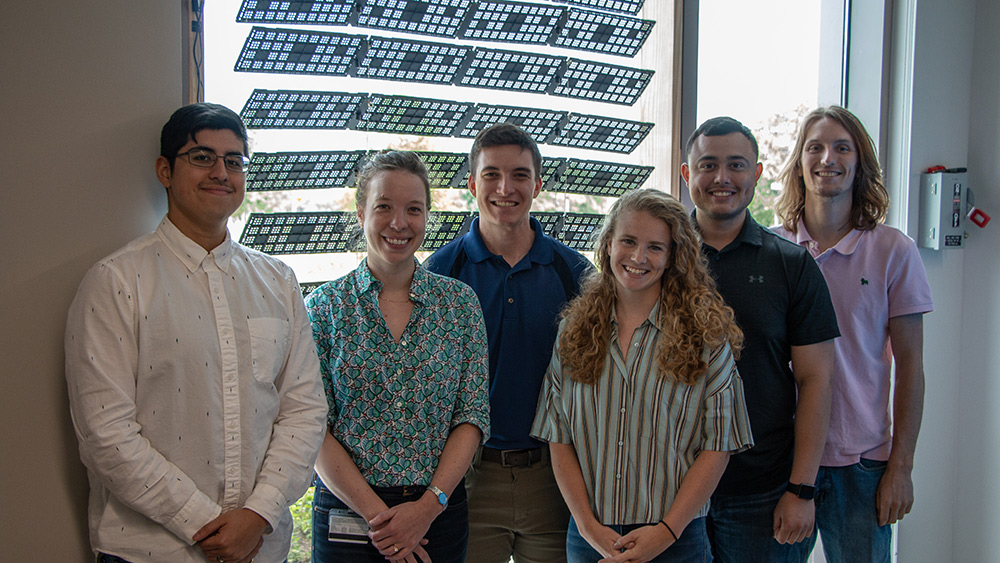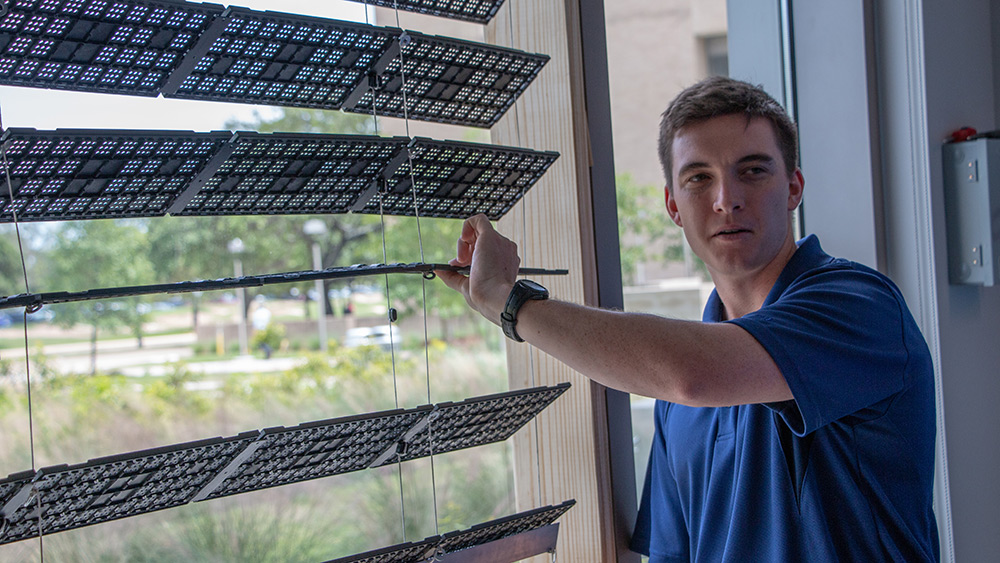
A team of newly-graduated Texas A&M University students created a prototype of a new kind of window shade design that automatically adjusts based on the time of day and uses materials that would otherwise be treated as waste.
Inspiration for the senior capstone design project stemmed from the Texas A&M President’s Excellence Fund T3: Texas A&M Triads for Transformation grants, resulting in a collaboration between mechanical engineering, architecture and materials science.
Once completed, the team’s design was installed in the Valero High Bay Lab of the Zachry Engineering Education Complex.
Dr. Astrid Layton, assistant professor in the J. Mike Walker ’66 Department of Mechanical Engineering, served as the team’s engineering advisor on the project alongside Dr. Ahmed Ali, assistant professor of architecture in the Department of Architecture, who served as the team’s architecture advisor.
“The project focused on taking a very common industry byproduct, a single-use matrix tray used for placing small electronic chips, and conceiving and prototyping a new product that would use the trays that removed them from the waste stream,” Layton said. “This goal aligns with those of a circular economy where the label ‘waste’ is removed by recognizing existing value. The students were given free rein in their concept generation, a freedom that resulted in an exciting final product with significant potential for future work.”

The team was made up of five graduating seniors, Joseph Bustillo, Miguel Cervantes, Austin Grosklags, Zachary Merrill and Alexandra Stewart.
Before their graduation, the team took time to answer a few questions about their project.
Q: What problem does your project address?
A: Countless matrix trays are used every year by manufacturing companies to transport computer chips. After a single use these trays are disposed of, and due to recent policy changes can no longer be sent to China to be recycled. Our team was tasked with finding a way to add value to this waste product by implementing it into a new design.
Q: Where did the inspiration for the project come from?
A: Our sponsors have done research in the areas of life-cycle design and architecture waste, and when they came across these trays, they were inspired by the opportunity to create something new out of something currently labeled ‘waste.’
Q: What factors influenced the design?
A: Many of our ideas came from things we saw in the world around us. The properties of the trays and the goals to utilize the entire tray and minimize modifications then helped to narrow down our options for what we would actually create.
Q: How did the team approach the project differently than it has been done before?
A: Previously, these trays had either been recycled or thrown away. Looking to create something completely new from these trays was an entirely different approach than what has been taken before.
Q: What impact could this project have?
A: If this design can be optimized in order to be mass produced it has the potential to keep a rather significant amount of these trays out of landfills. But if nothing else, it serves as proof to engineers that ‘waste’ is not always useless, and life-cycle design is becoming increasingly more important as time goes on.